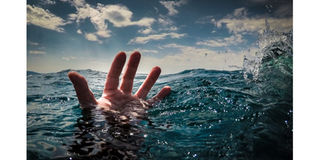Silent killer: Experts call for Tanzania drowning database

What you need to know:
- Globally, the WHO estimates that more than 236,000 people lose their lives to drowning each year, with over half of the victims being under the age of 30
Dar es Salaam. As Tanzania joins the world in marking International Drowning Prevention Day today, experts have called for urgent and coordinated efforts to establish a national database on drowning incidents to strengthaen prevention strategies.
Speaking during a media briefing yesterday under this year’s theme, “Your Story Can Save a Life”, the Environmental Management and Economic Development Organisation (Emedo) stressed the need for locally generated data to better understand the extent of the problem.
Emedo’s advocacy officer, Ms Mary Francis, said the country continues to rely heavily on international statistics, which hampers the design of effective, targeted interventions.
“Most of the available data comes from the World Health Organization (WHO), but we lack research-based national statistics. This creates confusion and limits the effectiveness of our interventions,” she said.
A member of the Media Institute of Southern Africa (MISA), Mr Edwin Soko, described drowning as a “silent killer” in Tanzania and said progress will be difficult to measure without reliable local data.
“Many people die from drowning, particularly in areas surrounded by water bodies,” he said.
Globally, the WHO estimates that more than 236,000 people lose their lives to drowning each year, with over half of the victims being under the age of 30. Most of these deaths occur during routine activities such as fishing and water-based transport.
In Tanzania, the national drowning rate is estimated at 2.2 deaths per 100,000 people. However, a study conducted in fishing communities along Lake Victoria revealed a much higher fatality rate of 217 per 100,000 people. Alarmingly, 87 percent of adult deaths occurred while fishing from boats.
Assistant Inspector John Nyanda from the Fire and Rescue Force expressed support for Emedo’s ongoing drowning prevention initiatives.
He said the force has been working with the organisation to deliver both practical and theoretical training to fishing communities.
“We have been educating people, especially those living near water bodies, on proper swimming techniques and the importance of wearing life jackets while fishing,” he said.
He urged residents of lakeside, riverside, and coastal areas to report emergencies promptly to enable rapid response from rescue teams.
“There is an emergency number that can be called when someone is drowning, but unfortunately, it is often misused. Timely reporting is critical—every second counts during a rescue,” he added.
The Tanzania Meteorological Authority (TMA) also reaffirmed its role in helping to prevent drowning through the issuance of timely weather updates.
A weather expert at TMA, Ms Sabina Hamis said the authority provides regular forecasts, warnings, and advisories to the public and relevant stakeholders to mitigate weather-related risks.
“We ensure daily weather forecasts and alerts are widely disseminated, especially for those travelling or working on water,” she said.



